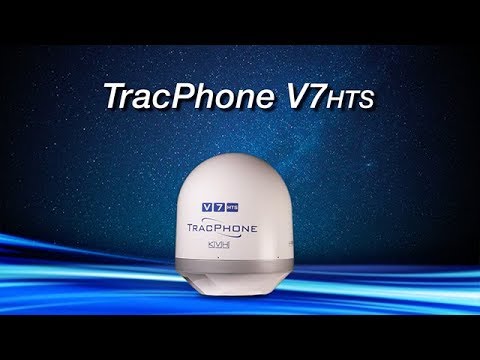As connectivity trends change, how is HTS ensuring tech companies keep up with demand?
With high-speed Internet essential on superyachts today—whether it’s to satisfy yacht owners and guests, or to attract and retain the best crew—attention is turning to high-throughput satellites (HTS) and the difference this new technology can make. Indeed, satellite communications specialist KVH recently hosted a panel discussion on this topic, with experts from the yachting, satellite, and marine electronics industries invited to contribute. But whilst many agree that the trends and realities of the superyacht market are a primary driving force behind HTS development and demand, the specifics of these trends and how HTS helps fulfill them is less clear. In this article, we bring you the experts’ opinion on how HTS can continue to enhance life onboard.

Dan Lesmez is sales director for Intelsat, the company behind the Intelsat EpicNG satellites and the award-winning IntelsatOne Flex platform. He sees HTS as the visible part of a much deeper transformation occurring in the telecom landscape. Lesmez argues that the digital revolution has meant service providers must work harder than ever to achieve what he calls ‘The 3 commandments’ – Everything, Everywhere and Always in order to keep up with the competition. On a superyacht, this translates to unlimited bandwidth, reliability and ubiquity.
“Before, it was all wide beams covering large geographic areas. With HTS, we overlay concentrated capacity on smaller spot beams over geographic areas where the traffic is concentrated. Where traditional wide beam satellites have 1-2 gigabytes of capacity in aggregate, HTS satellites carry up to 60 gigabytes of capacity. That way, HTS can meet the increased bandwidth demands from yachts today,” explained Lesmez.
Darryl Matfin, sales manager of KVH Superyacht Group, agrees that good yacht connectivity is no longer simply about fast speeds in the traditional yachting spots. He said: “It’s not just about the Med or the Caribbean, superyacht owners are increasingly interested in remote destinations, and they want fast data speeds, streaming services, and unlimited use of data no matter where they are.” And as the Everywhere factor grows increasingly important, Paolo Belluomini, sales manager for KD Italy, a leading European marine electronics firm, believes that coverage must also become much more unified. “Superyacht owners want… one global footprint for VSAT coverage to simplify life onboard,” he said.

Belluomini noted the three key technology trends on superyachts, all of which have been enabled by the availability of high-throughput satellites. For example, with many devices now transmitting telemetry and their own status the Internet of Things –2017’s buzzword – is set to continue dominating tech. We have also seen an increasing demand for more data onboard, as owners strive to make their experience more similar to that in their home or office. Lastly, with streaming video/music a common feature of modern life this ability is also expected onboard. In particular, this has led to a surge in requests for IPTV (Internet Protocol television, meaning the delivery of television content over Internet Protocol networks).
Luckily Matfin explains, HTS provides for these applications and more. BYOD (‘bring your own device’—each person on a yacht has an average of three devices), big data to support remote diagnostics and performance optimisation, cloud computing, video calls and streaming HD content is all possible today thanks to these advanced satellites. Things have come a long way in 40 years, as Johnny Lindstrom, design engineer for Westport Yachts, pointed out. In 1977 a broken radar or autopilot would mean the boat wasn’t going anywhere for the foreseeable future. Today if just the internet is down, the ETO can get somebody on a jet to come fix it ASAP. Connectivity is now seen as something we cannot live without.
But the availability of HTS will only take us so far if yachts are not willing to pay a fair price for their usage. During the talk Lindstrom encouraged superyacht owners and crew seeking HTS performance to focus on the many benefits of strong connectivity rather than seeing the communications solution as a budget item. “Yacht captains need to turn connectivity from a cost situation to a value situation,” observed Lindstrom, adding that the company is seeing an uptake in interest in 65-meter+ yachts. “Connectivity has a clear value in attracting charter guests, but it should also be part of yacht operations to better manage all the systems onboard the yacht.” Belluomini noted that he had witnessed this attitude increasing, with more and more owners prioritizing packages that were right for their entire yacht’s needs.
Learn more about KVH Connectivity with HTS from the new KVH TracPhone V7-HTS 60 cm Ku-band antenna with global download speeds up to 10 Mbps, and the advanced mini-VSAT Broadband network with 25 million square miles added to KVH’s industry-leading Ku-band coverage.
The video above is introducing KVH TracPhone V7-HTS
Want to hear more from Superyacht Technology News? Subscribe to our magazine free!

